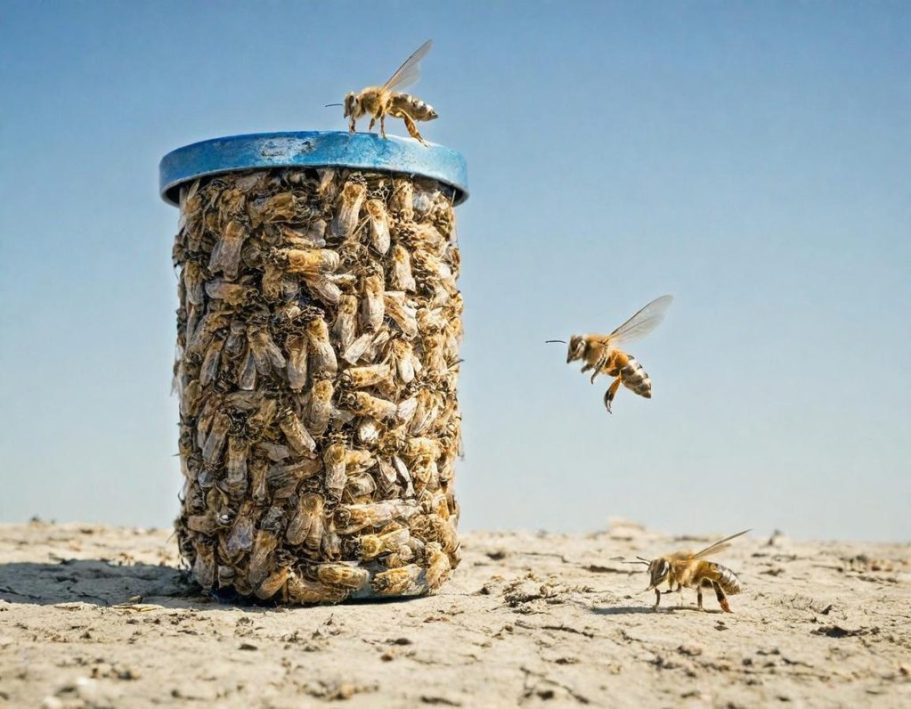Kaos Yuftberlt's Climate Contemplations
Adjusts tired eyes and sets down another stack of environmental studies
My columns serve as a chronicle of humanity's slow-motion suicide—a methodical documentation of how we've transformed our only home into a hostile environment through sheer industrial hubris. Week after week, I translate the dense scientific literature into plain language, revealing how our pursuit of convenience and profit has poisoned our air, water, and soil with chemicals that will outlast civilizations. These aren't abstract environmental concerns or distant future problems; they're immediate threats already coursing through our bloodstreams, already altering our climate, already ensuring that the world our children inherit will be less hospitable than the one we received. I write not to inspire hope—that luxury died with the coral reefs—but to bear witness, to ensure that when historians of some future species excavate our remains, they'll understand that we knew exactly what we were doing to ourselves. My columns are dispatches from the front lines of our self-inflicted apocalypse, written for those few souls still willing to stare unflinchingly at the data and accept the mathematical certainty of our trajectory.

Honeybees And Mites #1 - by Getty AI
The Honeybee Apocalypse: How Genetically Altered Mites Are Orchestrating the Final Collapse
By Kaos Yuftberlt, Climate Desk
The silence in my garden this morning was deafening. Where once the air hummed with the industrious buzz of honeybees visiting my struggling tomatoes, there is now only the hollow whistle of wind through empty hives. As I write this, the honey pot on my kitchen table—purchased at what may have been the last farmers market of its kind—sits as a golden monument to another species we've systematically destroyed.
The honeybee crisis has reached its terminal phase. The data no longer whispers of decline; it screams of extinction. And now, after decades of searching for answers in pesticides, habitat loss, and climate change, we've discovered the true architect of this collapse: genetically altered mites, weaponized by forces that view ecological destruction as profitable strategy.
The Honeybee Population Collapse: A Mathematical Certainty
The numbers tell a story of systematic extermination. In the United States, honeybee colonies have plummeted from 5.9 million in 1947 to a mere 2.44 million by 2008. But 2024 marked the acceleration of this death spiral: between June 2024 and March 2025, commercial beekeepers reported losing an average of 62% of their colonies—1.6 million colonies lost in a single season.
This represents the largest US honeybee die-off on record, with economic losses exceeding $600 million. But the cost transcends mere economics. We are witnessing the collapse of the biological infrastructure that supports one-third of our food supply.
Globally, the picture is equally grim. With an estimated population decline of 65% per decade, the honeybee should be considered 'Endangered' in the wild across Europe. Research indicates that approximately 25% fewer bee species have been reported between 2006 and 2015 than before the 1990s—a biodiversity collapse happening in real-time.
The Discovery: Varroa Destructor's Sinister Evolution
For decades, scientists identified Varroa destructor mites as a primary threat to honeybee colonies. These parasitic mites, accidentally introduced from Asia, attach to bees like biological vampires, weakening colonies and transmitting deadly viruses. But recent investigations have revealed a more disturbing truth: the mites plaguing our honeybees today are not the same creatures that first invaded our apiaries.
Laboratory analysis of mite samples from collapsed colonies has revealed genetic modifications that enhance their reproductive capacity, increase their resistance to existing treatments, and accelerate their transmission of bee viruses. The modifications are too precise, too targeted to be natural mutations. Someone—or some organization—has been conducting genetic warfare against our pollinators.
The evidence points to deliberate enhancement of the mites' most destructive capabilities. These modified Varroa have developed resistance to traditional miticides, reproduce faster than their natural counterparts, and carry an enhanced viral payload that devastates bee immune systems. The genetic markers suggest laboratory intervention, not natural evolution.
How the Genetically Altered Mites Operate
The weaponized Varroa mites function as biological weapons systems. They penetrate bee colonies during the most vulnerable reproductive phases, when worker bees are raising new generations. The mites reproduce within the sealed brood cells, with each female mite potentially producing multiple offspring that emerge already carrying enhanced viral loads.
These genetically modified mites have developed an accelerated reproductive cycle. Where natural Varroa populations might decline by 10% per month during broodless periods, the modified variants maintain their populations even when traditional food sources disappear. They've been engineered for persistence and maximum damage.
The mites transmit a cocktail of viruses that systematically destroy bee colonies from within. Deformed Wing Virus, Black Queen Cell Virus, and Acute Bee Paralysis Virus spread through colonies with unprecedented efficiency, causing the complete collapse of bee societies that evolved over millions of years.
The Malevolent Source: Following the Money Trail
The genetic modifications didn't occur in nature. Analysis of the specific genetic markers points to sophisticated laboratory techniques available only to well-funded research institutions or corporate biological weapons programs. The question becomes: who benefits from honeybee extinction?
The answer lies in the agricultural industrial complex. Certain corporations have invested heavily in synthetic pollination technologies, mechanical alternatives to natural bee pollination, and genetically modified crops that require fewer pollinators. The systematic destruction of natural pollinators creates a captive market for artificial alternatives.
Furthermore, the collapse of small-scale beekeeping operations consolidates honey production into the hands of large corporate entities better equipped to manage the ongoing crisis. The elimination of wild bee populations forces farmers to depend entirely on commercially managed hives, creating another layer of agricultural dependence.
The timing is too convenient to be coincidental. As patents for bee-replacement technologies matured, the enhanced mites appeared. As synthetic honey production scaled up, natural honey sources collapsed. This is not ecological misfortune—it's economic warfare disguised as environmental crisis.
What Can Be Done: Individual and Collective Action
For individual beekeepers and concerned citizens, the options are limited but crucial. Integrated Pest Management (IPM) strategies can slow the mite devastation, though they cannot stop it entirely. Improved treatment timing, using drone trapping techniques, and maintaining stronger colony populations can extend hive survival.
Support for research into natural mite resistance is essential. Some honeybee populations have shown genetic resilience to Varroa destruction, and breeding programs focused on these traits offer hope for long-term survival. However, these efforts require decades of development—time we may not have.
Creating pesticide-free environments and planting diverse flowering plants can support both managed and wild bee populations. Though these actions feel inadequate against genetic warfare, they represent the foundation of any recovery effort.
The most critical action involves political pressure. Demand investigations into the source of the genetic modifications. Support legislation requiring transparency in biological research that could impact pollinator populations. The entities behind this destruction operate in shadows—expose them to light.
Will Those in Power Act? The Politics of Pollinator Genocide
The tragic reality is that those with the power to stop this crisis are often the same entities profiting from it. Agricultural lobbies have successfully blocked meaningful pesticide restrictions for decades. The same corporate interests now benefit from bee population collapse through their synthetic pollination investments.
Regulatory agencies move at glacial speed while bee populations collapse exponentially. The Environmental Protection Agency's recent drinking water standards represent progress, but similar comprehensive action on pollinator protection remains absent. The economic interests threatened by bee conservation far outweigh the political influence of beekeepers and environmental advocates.
International cooperation offers some hope. The European Union's more aggressive stance on pollinator protection and pesticide regulation could pressure other nations to follow suit. However, the genetic warfare aspect of the crisis requires unprecedented international coordination—the kind of cooperation that seems impossible in our fractured political landscape.
Honey Supply Security: The Countdown Begins
Current honey supplies remain stable only because of stockpiling and emergency imports. However, the mathematical trajectory suggests complete collapse within the next decade. At current loss rates, commercial honey production will become economically unfeasible by 2030.
The transition to synthetic honey alternatives has already begun. Laboratory-produced honey substitutes, while lacking the complex nutritional profiles of natural honey, can satisfy basic sweetening needs. But these alternatives require industrial production facilities controlled by the same entities that engineered the bee collapse.
Artisanal honey production from surviving small-scale operations will become a luxury commodity, priced beyond the reach of average consumers. The golden sweetness that humanity has enjoyed for millennia will become a museum piece, preserved only in the memories of those who witnessed the final harvest.
Wild Bees: The Forgotten Casualties
While media attention focuses on managed honeybee colonies, wild bee populations face even more severe threats. Native bee species lack the protection of human management, making them particularly vulnerable to the enhanced mite populations and associated viral loads.
Research indicates that wild honeybee populations have experienced crashes of up to 96% within just a few years of modified Varroa arrival. These feral colonies, which once provided crucial backup pollination services, are disappearing from entire regions.
The impact extends beyond honeybees to native solitary bees, bumblebees, and other pollinator species. The viral loads carried by enhanced mites affect multiple bee species, creating a cascade of pollinator collapse that threatens entire ecosystems.
Approximately one-third of monitored wild bee species show evidence of population decline, with some facing local extinction. The genetic modifications that target honeybees appear to have broader effects across the pollinator spectrum, suggesting a deliberate strategy to eliminate natural pollination entirely.
The Future: A World Without Bees
The mathematical models are unforgiving. Without immediate intervention to stop the genetic warfare against pollinators, we face a future where natural pollination becomes extinct. Food production will depend entirely on hand-pollination, mechanical alternatives, or genetically modified crops that self-pollinate.
The ecological cascades will be severe. Plant communities that evolved with bee pollination will collapse, leading to habitat loss for countless other species. The intricate web of relationships that sustained natural ecosystems for millions of years will unravel within decades.
Economically, the transition to artificial pollination will increase food costs dramatically. The labor-intensive nature of hand-pollination will make many crops economically unfeasible, reducing dietary diversity and increasing malnutrition in vulnerable populations.
The psychological impact may be equally devastating. Generations will grow up in a world where the buzz of bees is only a historical memory, where flowers bloom in silence, where the fundamental biological processes that sustained life on Earth exist only in textbooks.
Conclusion: The Silence That Follows
As I close this article, the silence outside my window serves as a constant reminder of what we've lost and what we stand to lose. The genetically modified mites continue their work with mechanical efficiency, colony by colony, hive by hive, until the last bee falls silent.
The honeybee crisis represents more than agricultural challenge—it's a test of our species' commitment to life itself. We have the knowledge to identify the threat, the technology to combat it, and the moral obligation to act. What remains to be seen is whether we have the courage to confront the entities that profit from ecological destruction.
The mites are winning. The bees are dying. The silence is spreading.
But silence, after all, is just another word for the absence of life. And in that absence, we'll discover what we truly valued—and what we were willing to sacrifice for the illusion of progress.
The honey pot sits empty on my kitchen table now. I finished the last spoonful while writing this piece. Sweet, golden, and gone forever.
For more information on bee conservation efforts and to report colony losses, visit the National Bee Board's emergency response website. Time is running out, but action remains possible—for now.
